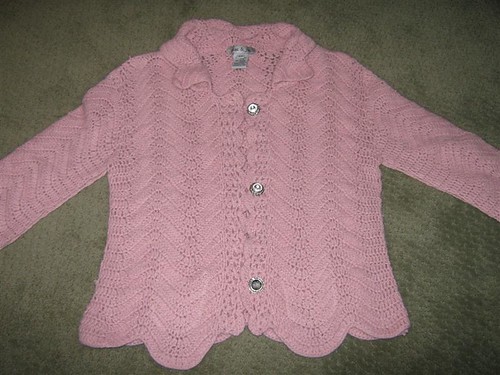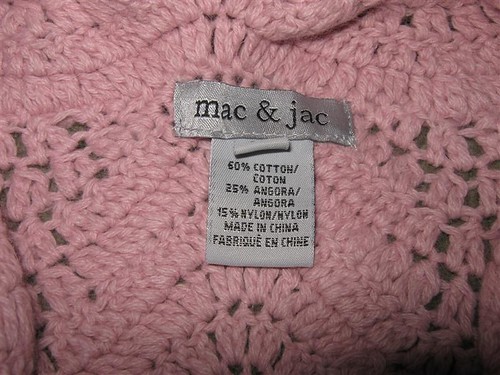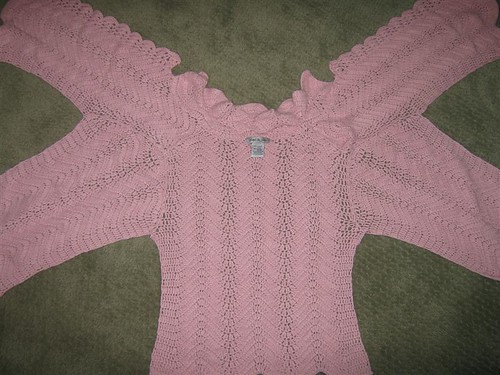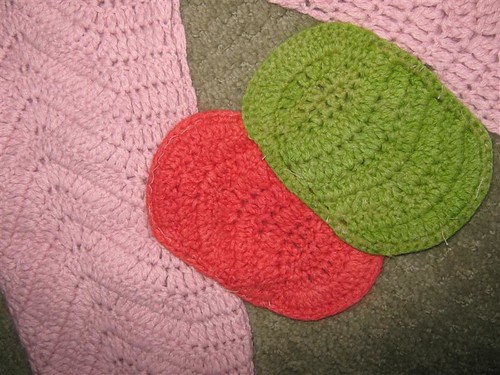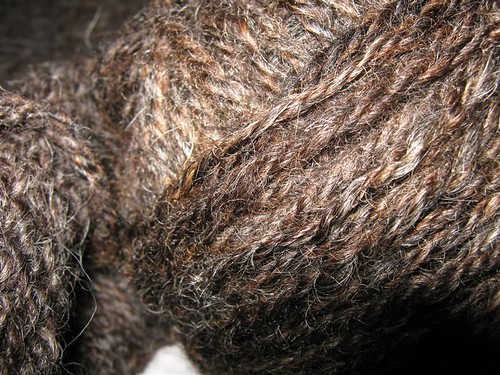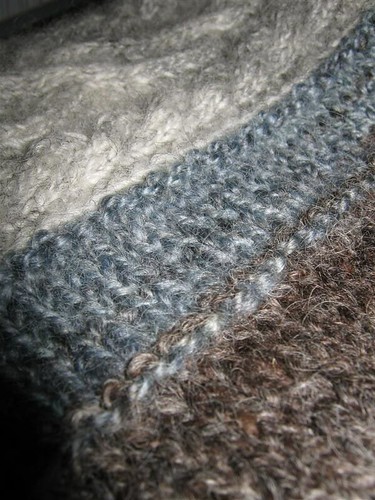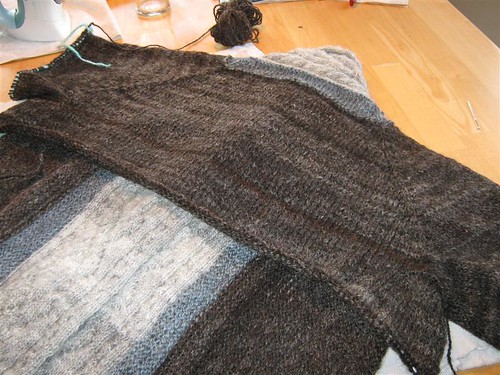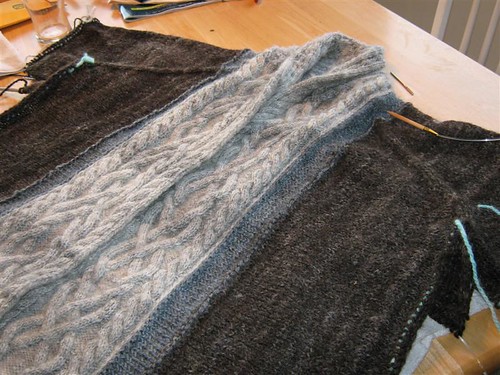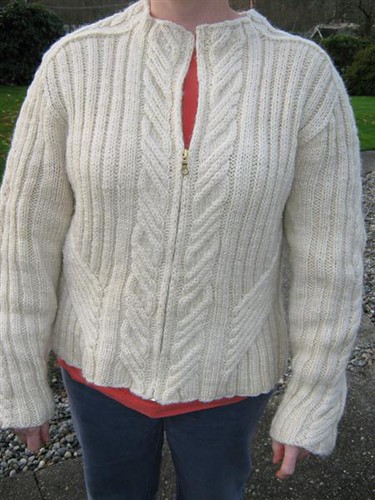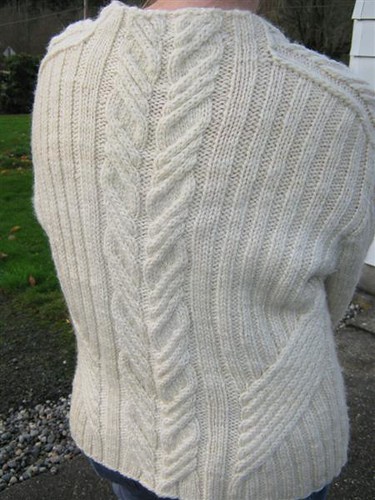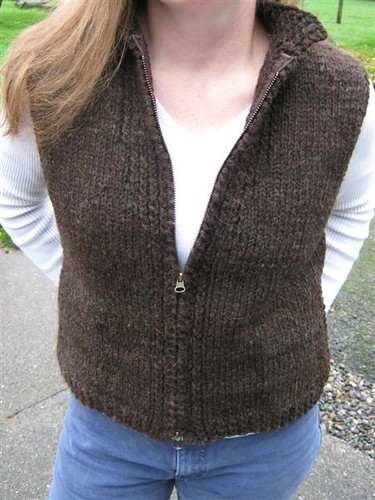Here is the challenge. To make this little crocheted pink cardigan:
Into something that some normal sized person might want to wear, or use.
It’s not that the poor thing is that heinous. But the buttons are, and the color is not especially appealing. And it’s really tiny.
I was given this sweater by a knitting friend as a crafting challenge. The goal is to creatively “repurpose” the item. That could mean dying, cutting, sewing, augmenting, etc. etc. Use your imagination.
The sweater does have some things going for it.
The 25% angora makes it very soft.
The fact that’s it primarily cotton is inherently limiting, because it means it’s not feltable. So, I’ve resolved to leave it mostly intact so as to avoid any unraveling that I might not be able to control.
It has, so far been really easy to disassemble:
I’ve only undone the arm and side seams. And that might be as far as I need to go. Right now, it looks like it might want to be a shawl. I’m thinking about filling in those empty wedges in the circle with knitted lace panels . I could even take it further and close the front, add a cowl neck and make it a poncho….
As for colors, I did a little bit of sampling on what used to be the little patch pockets :
(the red doesn’t look that bright in person- must be my flash)
That’s cherry koolaid on the left, and lemon-lime on the right. I’m leaning towards the lemon-lime right now, but may try and experiment further with more subdued hues. Might have to sacrifice the collar for that.
What do you think this sweater wants to be in it’s next life?

